Ditapis dengan
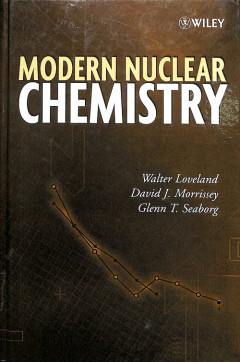
Modern Nuclear Chemistry
Modern Nuclear Chemistry provides up-to-date coverage of the latest research as well as examinations of the theoretical and practical aspects of nuclear and radiochemistry. Includes worked examples and solved problems. Provides comprehensive information as a practical reference. Presents fundamental physical principles, in brief, of nuclear and radiochemistry. The first succinct coverag…
- Edisi
- -
- ISBN/ISSN
- 9780471115328
- Deskripsi Fisik
- xvi, 671 p. : Illus. ; 24 cm
- Judul Seri
- -
- No. Panggil
- 541.38 WAL m

Radiation Detection And Measurement, Third Edition
A Classic Text on Radiation Detection and Measurement Now Updated and Expanded Building on the proven success of this widely–used text, the Third Edition will provide you with a clear understanding of the methods and instrumentation used in the detection and measurement of ionizing radiation. It provides in–depth coverage of the basic principles of radiation detection as well as illustratin…
- Edisi
- Third Edition
- ISBN/ISSN
- '0471073385
- Deskripsi Fisik
- xiv, 802 p. : illus. ; 26 cm
- Judul Seri
- -
- No. Panggil
- 539.77 Kno r
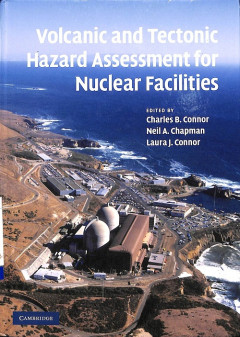
Volcanic and Tectonic Hazard Assessment for Nuclear Facilities
Geoscientists worldwide are developing and applying methodologies to estimate geologic hazards associated with the siting of nuclear facilities. Understanding such hazards, particularly in the context of the long functional lifetimes of many nuclear facilities, is challenging. This book documents the current state-of-the-art in volcanic and tectonic hazard assessment for proposed nuclear facili…
- Edisi
- -
- ISBN/ISSN
- 9780521887977
- Deskripsi Fisik
- xiii, 623 p. : Illus. ; 25 cm
- Judul Seri
- -
- No. Panggil
- 551.2 CON v
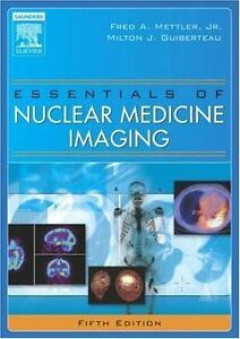
Essentials of Nuclear Medicine Imaging, Fifth Edition
Through four editions, this resource has established itself as the best introduction to nuclear imaging techniques. It is practical, yet comprehensive, covering physics, instrumentation, quality control, and legal requirements. The 5th Edition features a new color format, with many user-friendly features such as "Pearls and Pitfalls." More than 600 pictures in digital-quality resolution depict …
- Edisi
- Fifth Edition
- ISBN/ISSN
- 9780721602011
- Deskripsi Fisik
- xi, 577 p. : Illus. ; 26 cm
- Judul Seri
- -
- No. Panggil
- 616.07572 MET e
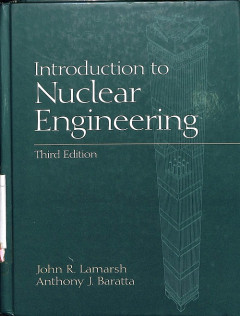
Introduction to Nuclear Engineering, Third Edition
Offering the most current and complete introduction to nuclear engineering available, this book contains new information on French, Russian, and Japanese nuclear reactors. All units have been revised to reflect current standards. Includes discussions of new reactor types including the AP600, ABWR, and SBWR as well as an extensive section on non-US design reactors; the nuclear Navy and its impac…
- Edisi
- Edisi Ke-3
- ISBN/ISSN
- 020824981
- Deskripsi Fisik
- xv, 783 p : Illus ; 2,1 cm
- Judul Seri
- -
- No. Panggil
- 621.042 LAM i
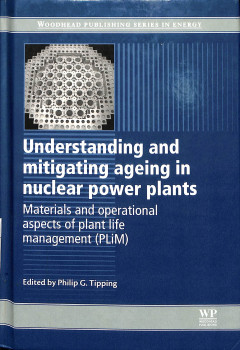
Understanding and Mitigating Ageing in Nuclear Power Plants: Materials and Op…
Plant life management (PLiM) is a methodology focused on the safety-first management of nuclear power plants over their entire lifetime. It incorporates and builds upon the usual periodic safety reviews and license renewals as part of an overall framework designed to assist plant operators and regulators in assessing the operating conditions of a nuclear power plant, and establishing the techni…
- Edisi
- -
- ISBN/ISSN
- 9781845695118 / 20449364
- Deskripsi Fisik
- xxxvii, 914 p. : Illus. ; 24 cm
- Judul Seri
- -
- No. Panggil
- 621 TIP u
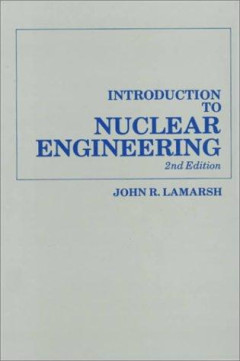
Introduction to Nuclear Engineering 2nd Edition
Offering the most current and complete introduction to nuclear engineering available, this book contains new information on French, Russian, and Japanese nuclear reactors. All units have been revised to reflect current standards. Includes discussions of new reactor types including the AP600, ABWR, and SBWR as well as an extensive section on non-US design reactors; the nuclear Navy and its impac…
- Edisi
- 2nd Edition
- ISBN/ISSN
- 9780201142006
- Deskripsi Fisik
- 689 p. : illus. ; 23,5 cm
- Judul Seri
- -
- No. Panggil
- 621.042 LAM I
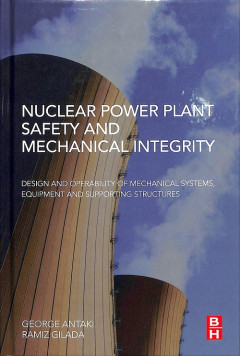
Nuclear Power Plant Safety and Mechanical Integrity: Design and Operability o…
One of the most critical requirements for safe and reliable nuclear power plant operations is the availability of competent maintenance personnel. However, just as the nuclear power industry is experiencing a renaissance, it is also experiencing an exodus of seasoned maintenance professionals due to retirement. The perfect guide for engineers just entering the field or experienced maintenance s…
- Edisi
- -
- ISBN/ISSN
- 9780124172487
- Deskripsi Fisik
- 337 p. : illus. ; 23.5 cm
- Judul Seri
- -
- No. Panggil
- -
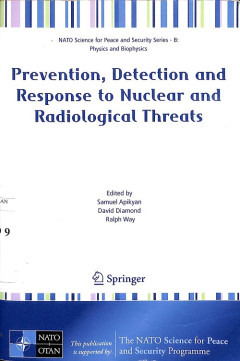
Prevention, Detection and Response to Nuclear and Radiological Threats
Since the end of the Cold War, the nuclear threats facing the world are dramatically evolving and have become even much more complex. However, the events of the past years have proved the necessity to reevaluate these threats on a level never before considered. The need to prevent, detect and respond to Nuclear/Radiological threats leads to many requirements that are not met by current scientif…
- Edisi
- -
- ISBN/ISSN
- 9781402066573
- Deskripsi Fisik
- x,308 p. : Illus. ; 23,5 cm
- Judul Seri
- -
- No. Panggil
- 363.1799 API p
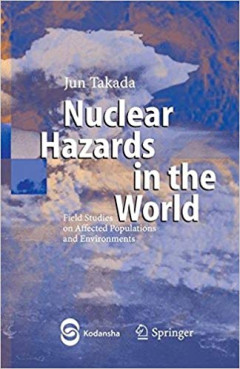
Nuclear Hazards in the World: Field Studies on Affected Populations and Envir…
This book provides updated information on a number of radiologically hazardous areas, based on recent field work. From Chernobyl to plutonium production complexes, from Hiroshima to former Soviet and U.S. nuclear test sites, the relationship between contamination levels and doses in the population and the recovery from hazards are discussed in detail. The author assesses the far-reaching effect…
- Edisi
- -
- ISBN/ISSN
- 9783540252726
- Deskripsi Fisik
- xiii, 134 p. : Illus. ; 21 cm
- Judul Seri
- -
- No. Panggil
- 363.1799 TAK n
 Karya Umum
Karya Umum  Filsafat
Filsafat  Agama
Agama  Ilmu-ilmu Sosial
Ilmu-ilmu Sosial  Bahasa
Bahasa  Ilmu-ilmu Murni
Ilmu-ilmu Murni  Ilmu-ilmu Terapan
Ilmu-ilmu Terapan  Kesenian, Hiburan, dan Olahraga
Kesenian, Hiburan, dan Olahraga  Kesusastraan
Kesusastraan  Geografi dan Sejarah
Geografi dan Sejarah